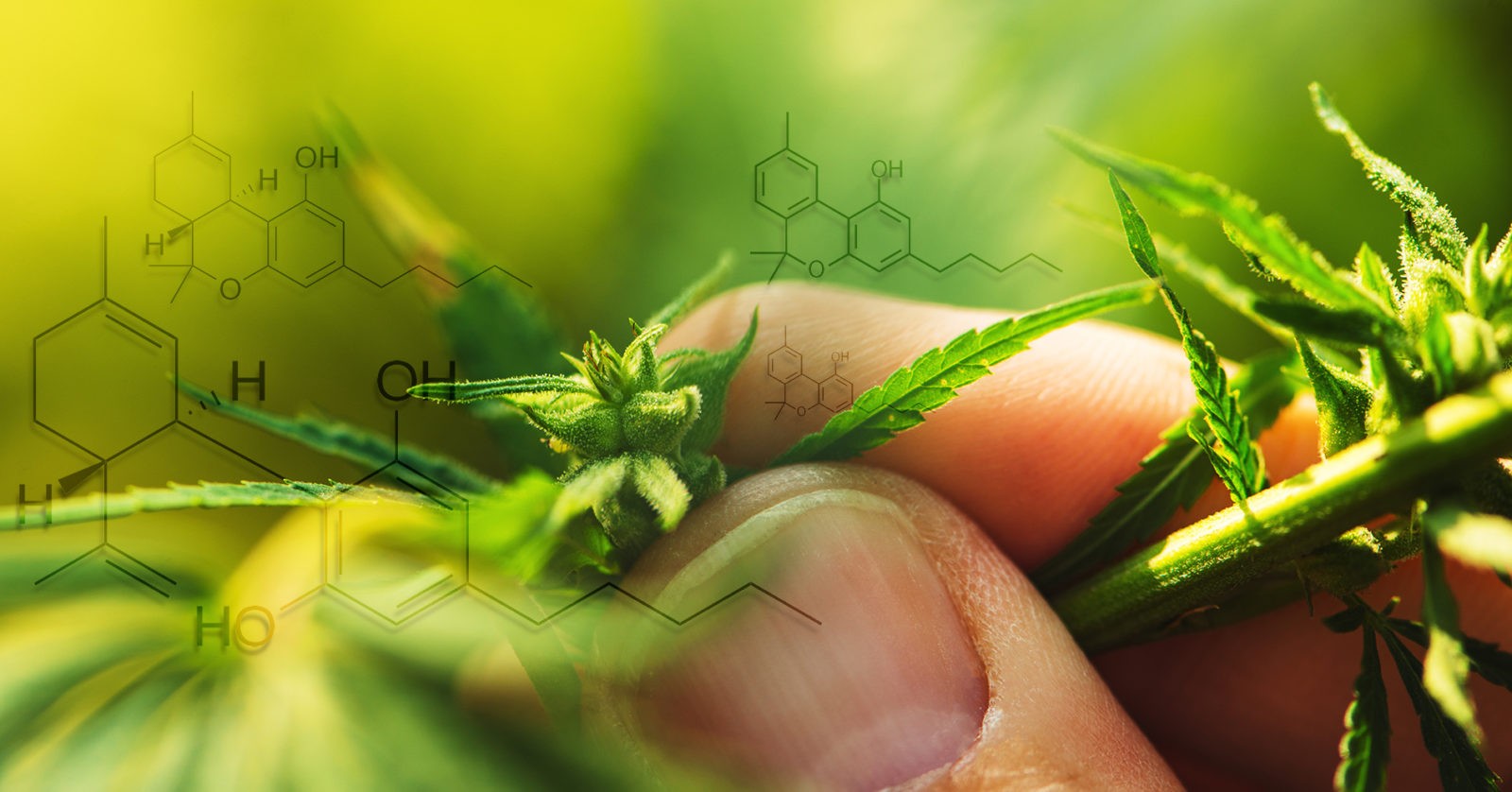
Phytocannabinoids are the compounds that make cannabis a popular remedy for a variety of conditions. Phytocannabinoids are found in every variety of cannabis plant—both hemp and marijuana—although the levels of each cannabinoid present vary from strain to strain. There are over 100 identified phytocannabinoids and researchers are actively studying the plant to better understand their physiological effects.
These plant-based cannabinoids interact with a series of receptors found throughout the body called the endocannabinoid system. We’ll be covering that system in our next post.
The Most Common Phytocannabinoids
Most people know the big two: THC and CBD. THC is notorious for its psychoactive effects, which are frequently cited by proponents of cannabis prohibition. The focus on the perceived negative side effects of THC put a damper on studying the pharmacological effects of the many other cannabinoids for decades. While research into the potential benefits of cannabinoids has ramped up significantly in recent years, we still only understand about 10% of known phytocannabinoids.
Here are some of the more well-documented phytocannabinoids and their pharmacological activities:
?9-Tetrahydrocannabinol (?9-THC): THC is the psychoactive phytocannabinoid. It is found in large quantities in marijuana, but hemp is legally required to have 0.3% or less THC by dry weight. While THC is often associated with recreational use, researchers have identified many potential pharmacological effects including: anti-inflammatory, antiemetic (reduces nausea), anti-epileptic (prevents seizures), and analgesic (painkiller). Cannabis advocates say even the small quantities of THC found in hemp plants increase the effectiveness of other phytocannabinoids, including CBD (we'll get back to that in just a moment though).
Cannabidiol (CBD): CBD content is typically highest in hemp plants and reduces the psychoactive effects of THC. CBD is not psychoactive. It is the most readily available cannabinoid on the market in large part thanks to the 2018 US Farm Bill, which legalized hemp cultivation, sale, and use. Cannabidiol has been observed to have a wide variety of applications and pharmacological effects. Some of these observed effects include: anti-cancer, antiproliferative (prevents tumor cell growth), anti-emetic, antibacterial, immunosuppressive, antispasmodic, neuroprotective, and more.
Cannabichromene (CBC): CBC is another non-euphoric cannabinoid. It is unique in that it does not bind to cannabinoid receptors in the body, but instead binds to the vanilloid receptor 1 (TRPV1) and transient receptor potential ankyrin 1 (TRPA1). Pharmacologically, research suggests it acts as an anti-inflammatory, analgesic, bone stimulant, anti-fungal, and anti-microbial.
Cannabigerol (CBG):CBG is found in low amounts in most strains and is non-intoxicating. It is significant for study because it is the chemical parent of THC and CBD. It has shown potential in a number of studies for varying conditions including Huntington’s disease and cancer. Pharmacologically, it is an Anti-proliferative and antibacterial.
Cannabinol (CBN): CBN is another cannabinoid typically found in trace amounts—often less than 1% by dry weight. It is studied for its potential as a non-intoxicating sedative. Research has shown CBN’s pharmacological effects include analgesic, anti-inflammatory, and anti-cancer properties.
Cannabidiolic Acid (CBDA): CBDA is the precursor to CBD found in raw plants. Cannabidiolic acid is converted to CBD by the process of decarboxylation—which happens when the plant is exposed to heat or light. Studies show CBDA may be a more powerful antiemetic than CBD and THC.
The Entourage Effect
While each phytocannabinoid has its own unique effects on its own evidence shows that they are more effective when multiple cannabinoids are present. This phenomenon is known as the “entourage effect.”
For example, one recent study found that on its own, CBD has a very narrow dose range when treating pain and inflammation. In the study, CBD was less effective when doses were below andabove that range. However, a whole-plant extract containing THC, CBC, CBG, CBN, and cannabidivarin (CBDV) had improved effects with larger doses. Even trace amounts of phytocannabinoids contribute to this entourage effect.
Finding the Right Hemp Product
The key when selecting a hemp product is to research the desired benefit and determine which blend of phytocannabinoids and other natural compounds may deliver the result you’re looking for. Pure CBD is well-suited for some applications, while others may require a product with a variety of phytocannabinoids.
At Apotheca, we provide lab results detailing the exact cannabinoid content of products whenever possible to help you make the most informed decision regarding your own wellness. In addition to phytocannabinoids, many products contain other nutrients including terpenes and flavonoids. These are typically labeled as full-spectrum or broad-spectrum products. We will cover the unique properties of terpenes and flavonoids in a future post, so be sure to check our blog regularly. Our goal is to help you understand the complexities of
If you're ready to explore the many hemp products we have available, visit our store.
This post references CBD: A Patient’s Guide to Medicinal Cannabis by Leonard Leinow & Juliana Birnbaum throughout. To purchase the book, you can click here.



